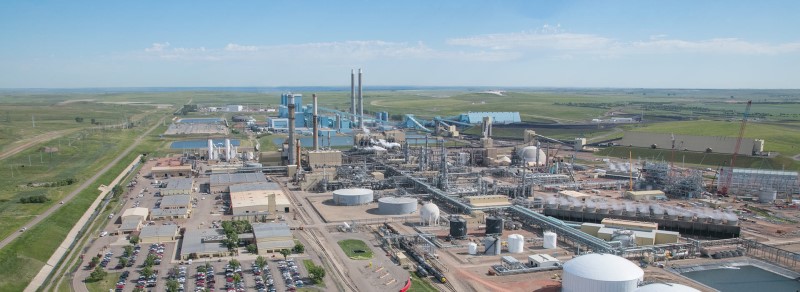Bakken Energy, Mitsubishi to Repurpose North Dakota Gas Plant for Hydrogen Production
(P&GJ) — Bakken Energy and Mitsubishi Power Americas are establishing their positions in North America’s cleaner-energy future with a partnership agreement to create a clean hydrogen hub in North Dakota.
This hub will be composed of facilities that produce, store, transport and consume clean hydrogen, while capturing and sequestering carbon emissions, the companies said. The hub will be connected by pipeline to other clean hydrogen hubs being developed in North America.

The companies announced the plans for the North Dakota hub in June, following an announcement of Mitsubishi Power developing a hydrogen hub with Magnum Development in Utah to support the western U.S., and in May signed an agreement to develop hydrogen storage solutions with Texas Brine across the eastern U.S.
This month, Bakken Energy announced it reached an agreement to purchase Dakota Gasification Company’s (Dakota Gas) assets from Basin Electric Power Cooperative. The closing is subject to conditions and expected to be completed by early 2023.
The Synfuels Plant, owned by Dakota Gas, is near Beulah, North Dakota, and will be part of Bakken’s acquisition. The plant will be transformed into the largest and lowest-cost, clean hydrogen production facility in the United States, the company said.
The Synfuels Plant facility will form the nucleus of Bakken and Mitsubishi’s North Dakota clean energy hub designed to aggressively advance regional, national, and global decarbonization objectives through the development of clean hydrogen applications for the agriculture, power, and transportation sectors.
The Synfuels Plant has two synthetic natural gas pipelines and one carbon dioxide pipeline, according to Dakota Gas. One synthetic natural gas pipeline moves gas from the plant to a hub on the Northern Border Pipeline, and another delivers gas from the Synfuels Plant to Antelope Valley Station, the website states. The carbon dioxide pipeline transports CO2 captured at the plant and transports it to oil fields in Canada.
The Associated Press described the plant as “a financially troubled synthetic natural gas plant” which “was built in response to the energy crisis of the 1970s to make natural gas from lignite, a low-grade coal that is abundant in North Dakota.”
The hydrogen for the project will come from natural gas produced in North Dakota’s oil fields or from gas from the Dakota Gasification plant, or a mix, the Associated Press reported.
“The North Dakota Hydrogen Hub will lead to the establishment of new industries, create high-paying jobs and the development of new domestic and foreign markets,” North Dakota Gov. Doug Burgum said. “This project illuminates how the power of innovation over regulation can save versus destroy jobs.”
While clean hydrogen production facilities usually take up to a decade to begin producing hydrogen and develop regional infrastructure and applications, the Synfuels Plant will take about five years and produce about 310,000 metric tons of hydrogen per year, Bakken said.
“This production will use locally sourced feedstock and employ established production and carbon capture processes to produce the clean hydrogen,” the company said. “The project will use advanced ATR (autothermal reforming) hydrogen production technology and capture 95% of the carbon emissions.”
As part of the agreement between Basin Electric and Bakken, the Synfuels Plant will continue existing operations through 2025, Bakken said. The transformation of the existing facility and subsequent operations of the redeveloped clean hydrogen production facility will require the same number of employees, the company said.
The North Dakota Hydrogen Hub is expected to be commercially operational in late 2026 with a redevelopment budget for the broader hub including carbon capture and sequestration and hydrogen storage exceeding $2 billion, Bakken said.
Related News
Related News

- Keystone Oil Pipeline Resumes Operations After Temporary Shutdown
- Biden Administration Buys Oil for Emergency Reserve Above Target Price
- Freeport LNG Plant Runs Near Zero Consumption for Fifth Day
- Enbridge to Invest $500 Million in Pipeline Assets, Including Expansion of 850-Mile Gray Oak Pipeline
- Mexico Seizes Air Liquide's Hydrogen Plant at Pemex Refinery
- Evacuation Technologies to Reduce Methane Releases During Pigging
- Editor’s Notebook: Nord Stream’s $20 Billion Question
- Enbridge Receives Approval to Begin Service on Louisiana Venice Gas Pipeline Project
- Mexico Seizes Air Liquide's Hydrogen Plant at Pemex Refinery
- Russian LNG Unfazed By U.S. Sanctions




Comments